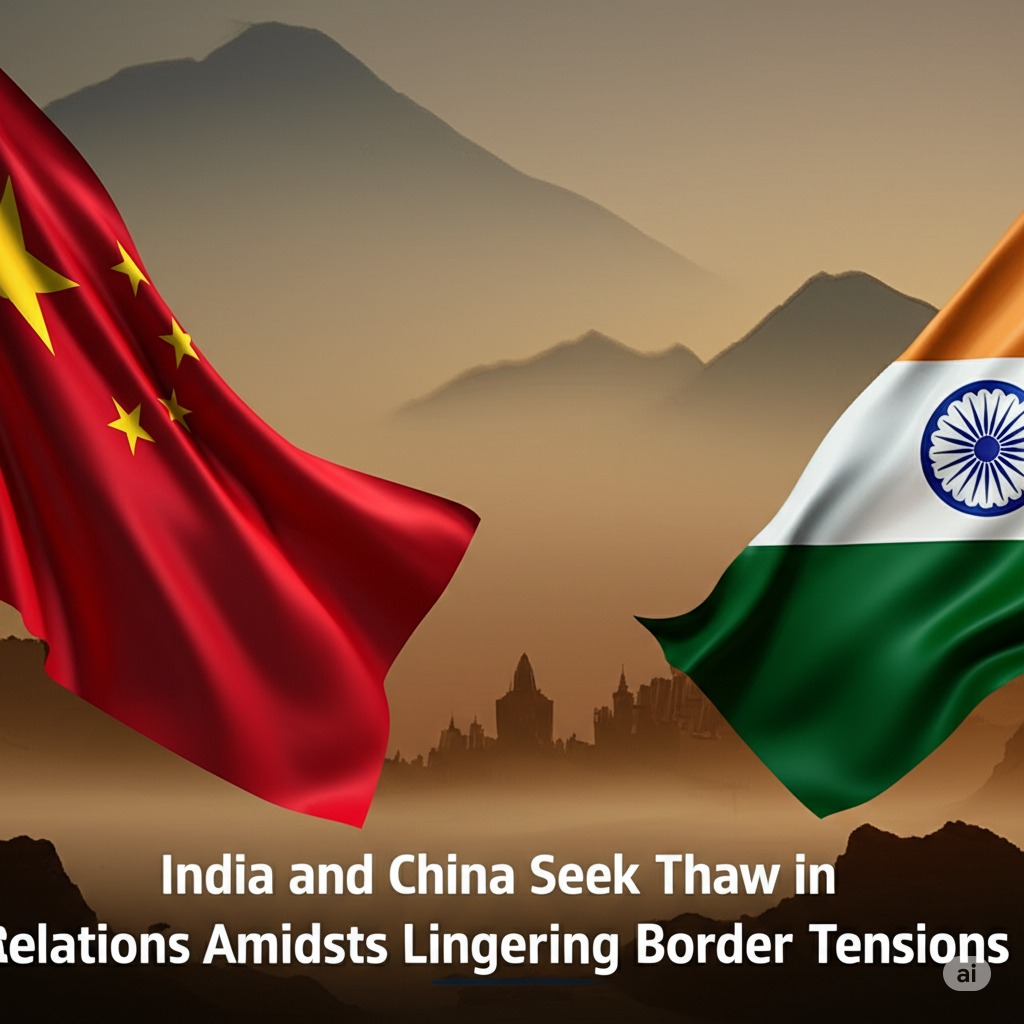India and China Seek Thaw in Relations Amidst Lingering Border Tensions
Published on June 11, 2025 | Generated by AI
 🤖 AI-generated Image
🤖 AI-generated Image
Why It Matters
India-China relations are at a critical juncture as both nations engage in high-level diplomatic exchanges aimed at normalizing ties strained by recent border standoffs. The upcoming visit of China's Vice Foreign Minister to India underscores a mutual, albeit cautious, willingness to de-escalate and address contentious issues. At stake is not only bilateral stability but also broader regional security dynamics and economic interdependence, making these talks a focal point for observers worldwide.
Background & Timeline
The relationship between India and China has a complex history, marked by periods of cooperation and significant conflict. Initial post-independence bonhomie soured, leading to the brief but impactful border war in 1962, the repercussions of which continue to influence perceptions and the unresolved boundary dispute. Despite efforts towards normalization and expanding economic ties in subsequent decades, including numerous agreements and confidence-building measures, periodic face-offs along the Line of Actual Control (LAC) have remained a persistent challenge. The most significant recent downturn occurred following the violent clashes in the Galwan Valley in June 2020, which led to casualties on both sides and a severe degradation of diplomatic and military trust, necessitating multiple rounds of talks at various levels to manage the tensions.
What’s Happening Now
- June 11, 2025: Chinese Vice Foreign Minister Sun Weidong is anticipated to visit India this week for high-level discussions, marking the second such bilateral exchange this year.
- Key agenda items for the upcoming talks are expected to include the normalization of relations, specifically addressing the aftermath of the Ladakh standoff.
- Discussions will likely also cover the potential resumption of air services between the two countries.
- Efforts to revive and enhance people-to-people exchanges are also on the table.
What Could Happen Next
-
1. Gradual Normalization: The high-level talks lead to tangible progress on de-escalation in remaining friction areas along the LAC and agreement on resuming certain exchanges like air travel. This could signal a phase of cautious normalization, focused on managing differences while rebuilding limited trust. Consequences could include improved trade sentiment and reduced immediate border tensions, though fundamental boundary issues would likely remain unresolved.
2. Limited Progress, Continued Stalemate: The talks yield minimal breakthroughs on key issues, particularly the complete disengagement along the LAC. While communication channels remain open, substantive normalization falters. Drivers for this could be a lack of flexibility from either side on core demands or persistent mistrust. Risks include the potential for renewed minor confrontations and a prolonged period of frosty relations, impacting economic potential and regional stability.
3. Renewed Tensions: A breakdown in communication or failure to manage expectations during the talks leads to increased rhetoric or a rise in incidents along the border. While less probable given the stated goal of normalization efforts, it remains a risk if underlying differences prove insurmountable or if unexpected events occur. This would severely damage prospects for improvement and could necessitate further military and diplomatic maneuvering.
This article is generated using AI-assisted summaries and verified timelines.
